Though it has been more than a quarter of a century since the Seinfeld pilot had its July 5, 1989 debut, the sitcom’s catch phrases have filtered into public language and nostalgic fans often have huge numbers of brain cells devoted to vast amounts of show trivia. What is fascinating about the collected trivia is that much of it describes numbers. The most common, and frequently published, have to do with salaries for the show’s characters and the money these stars and the show itself is making from syndication.
But, there are many more intriguing numbers which are surprising because, just like the show itself, they are about all sorts of information that would mean nothing if it had not been collected and quantified in relationship to the popular “show about nothing”. It’s these bits of disjunctive minutia that Seinfeld fans adore, and these are the numbers that bring wide smiles to the faces of avid Seinfeld trivia collectors.

1. $40,000,
2. $1 million
3. $110 million
During the 1991 to 1992 season, Jerry Seinfeld was paid $40,000 per episode. During the show’s final season, 1997 to 1998, he was paid $1 million per episode. He was offered $110 million to do a tenth season, but he turned down NBC’s offer to continue. He decided that nine seasons completed the show, and that is another story about numbers that was revealed when Vanity Fair did a cover story of him in 1998 when the series finally ended. He was quoted as saying “Nine is cool.” He had discovered that the number nine means completion in numerology. Learning that the Beatles stayed together nine years and then broke up was also an inspiration to Seinfeld. It turns out that nine is also a highly significant number in his life:
• He was born in 1954 (5 plus 4 = 9).
• He graduated high school in 1972 (7 plus 2 = 9).
• His first Tonight Show appearance was in 1981 (8 plus 1 =9).
• His sitcom Seinfeld first aired in 1989 (1 plus 9 plus 8 plus 9 = 27; 2 plus 7 = 9).
• The show was shown at 9 P.M.
• The show ended in 1998, which also equals 27 and, of course 2 plus 7 =9.
Seinfeld also said that when he thought about the end of the show, he felt that nine was his number.
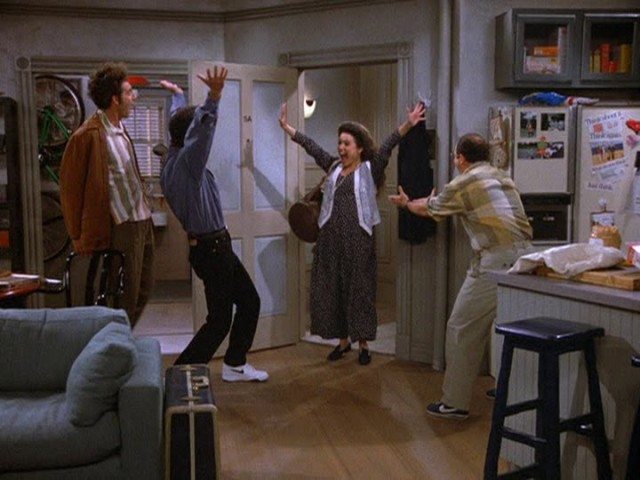
4. 4
5. 76.3 million
The Seinfeld finale aired on the West Coast on May 14, 1998. During the show, Frank Sinatra experienced a heart attack at his home. It was 9:14 PM on Thursday night when the Beverly Hills emergency line, 911, took the call. Newspaper reporter Michelle Caruso, detailed comments made by emergency personnel. She noted that Beverly Hills Police Officer Mark Parker indicated that the call was routed immediately to the Fire Department Rescue division. Fire Chief Mike Smollen said that the traffic was light and reports had come in that the streets in Los Angeles were “nearly deserted” because the Seinfeld sitcom finale had kept the streets fairly empty between 8 and 10 PM that night. An ambulance with two paramedics and a four-man fire engine company arrived at Sinatra’s home in 4 minutes. Sinatra was rushed to Cedars-Sinai Medical center arriving at 9:35 PM. The reported number of Seinfeld finale viewers that night was 76.3 million.
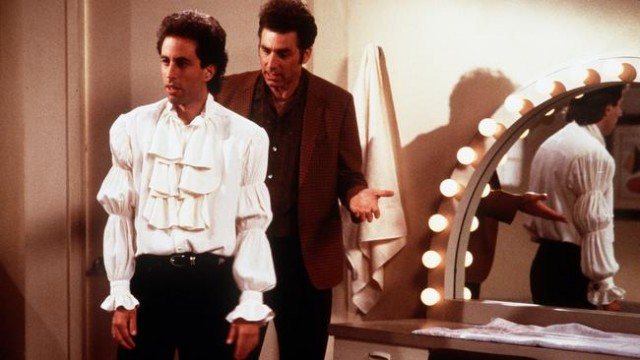
6. $400 million
7. $1.7 billion
8. $3.1 billion
Jerry Seinfeld and Larry David each were calculated to make $400 million off a recent syndication cycle of the sitcom. This mind-boggling amount is a mere bag of shells compared to the dollar syndication deal Larry David secured for $1.7 billion after the show ended. In 1998, he received $250 million, and though the amounts decrease each year, he will continue to receive payments until the $1.7 billion total has been reached. Where bags of shells are concerned, Seinfeld reruns on late night or TBS as a syndicated show have raked in $3.1 billion.
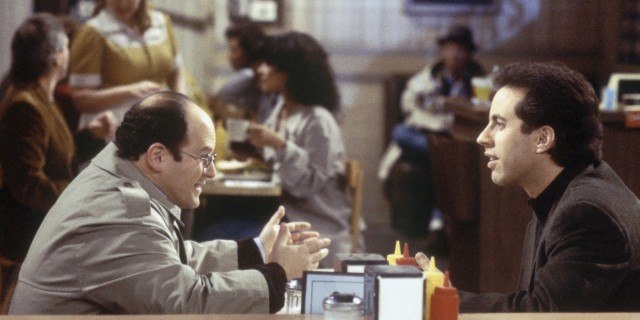
9. “#1”
Only three television series have ranked #1 in ratings for the entire final network season. These are I Love Lucy in 1951 and in 1956 to 1957; The Andy Griffith Show in 1960 and in 1967 to 1968 and Seinfeld during its last season in 1998. These three are the only ones in American History to do so. When the TV Guide Editors chose their list of 50 shows in April 2002 for the #1 Top TV Series of All Time, voting placed Seinfeld #1 over I Love Lucy (1951) in the #2 spot and The Honeymooners (1955) in the #3 spot. TV Guide’s, 20 top Catchphrases from the August 21-27, 2005 issue ranked Seinfeld’s “Yada, yada, yada” as #1.

10. $1,000
Larry David asked former neighbor in real life, Kenny Kramer, if the sitcom could have permission to use his name for Jerry’s television neighbor. The real Kramer was paid the small sum of $1,000. But over the years, he profited from that arrangement. He created the Kramer Reality Tour, which takes tourists on a bus ride in New York City that focuses on all things Seinfeld. The tour promises a theatrical stage, bus and video tour of all the spots that the sitcom made famous. Kenny Kramer is the guide of this 3 hour extravaganza, which offers photo opportunities, online booking, group sales and private and corporate events.
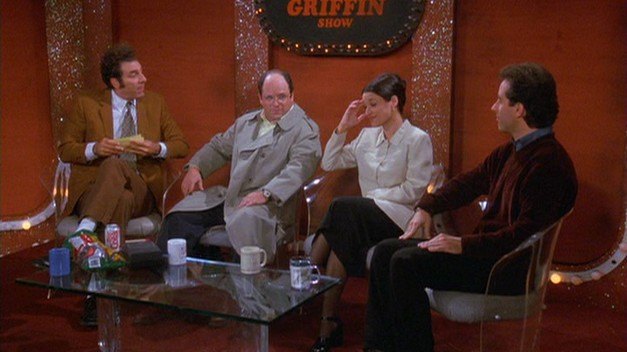
11. $100 million
Jerry’s real life friend, named Mike Costanza, was the model for the name of the character George Costanza. During the show’s run, Mike Costanza sued NBC, Jerry Seinfeld and Larry David for $100 million. The basis of the real Costanza’s suit was that the show defamed his character and invaded his privacy. The New York State Supreme Court Appellate Division judges ultimately ruled that Seinfeld only used Costanza’s image in one episode for a short cameo, and that the statute of limitations on the case had run out due to Costanza’s late filing. The court dismissed the case. In time, Costanza authored a book The Real Seinfeld (as Told by the Real Costanza). The book is described by the real Kramer in his online website as an attempt to accuse the Seinfeld and David of using his personality and likeness because they were incapable of having the imagination to create a Costanza character on their own.
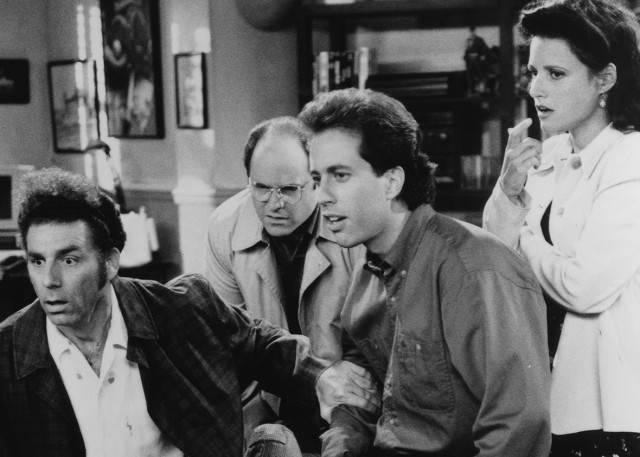
12. 5
Jerry Seinfeld opened up about his preferences for his least and most favorite Seinfeld episodes. On Bravo TV’s interactive, late night talk show, Watch What Happens: Live, during the May 2012 episode, he told the viewing audience that “The Alternate Side” was the episode he liked the least. The 5 episodes he liked best included “The Yada Yada”, “The Boyfriend”, “The Rye”, “The Pothole” and “The Contest”. Seinfeld has had several engaging episodes with host Andy Cohen about numerous topics. On one episode, Cohen revealed that the game show “Who Wants to be a Millionaire?” had included over 200 Seinfeld show questions.
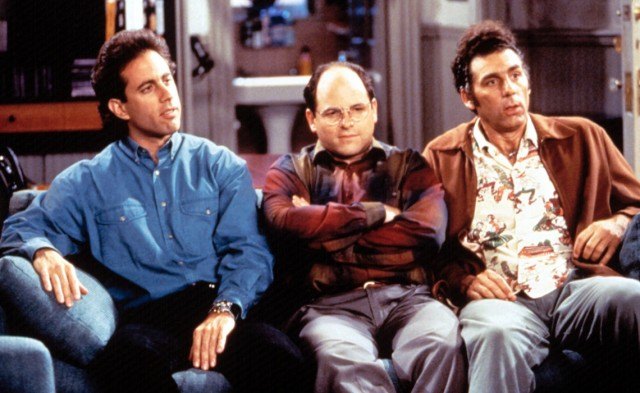
13. $16,500
During Seinfeld Season 5, Episode 2, and 66th overall, “The Puffy Shirt”, Jerry is stuck wearing the pirate shirt made by Kramer’s new girlfriend. Of course, the episode has been aired so many times that many Seinfeldians can recite the dialogue verbatim. Many of them have even purchased replicas of the shirt to wear themselves, as there are many for sale online for prices ranging anywhere from $25 to $50 or so. Though the shirt has been described by various members of the news media as “hideous”, “atrocious” and “hysterical”, to name just a few, many replicas have popped up for sale online. One even made it to an auction site for Goodwill. One very important part of the saga of the puffy pirate shirt, though, is that Jerry eventually donated one shirt used in the episode to the Smithsonian, where it resides as testimony to what many fans call one of the funniest television sitcom episodes ever. A second spectacular part of the puffy shirt tale is that one shirt worn during the episode sold at a 2002 auction held by Julien’s Auctions, “The Auction House to the Stars”, for $16,500.
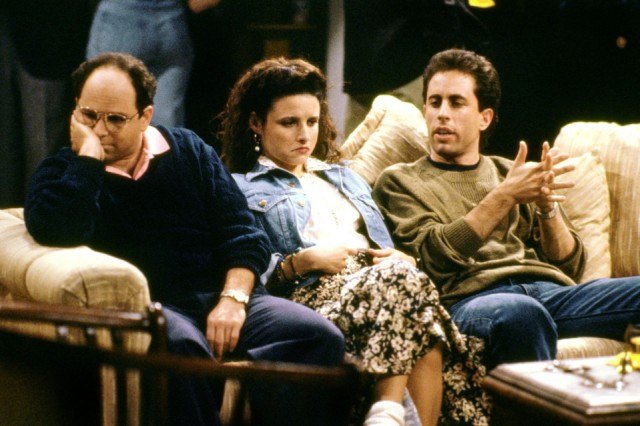
14. 757
There’s much discussion about where Jerry actually lives. His address is often mentioned throughout the course of the sitcom as 129 West 81st Street. This is a location on the Upper West Side of Manhattan. The address mentioned is west of Central Park by an avenue and a half. The Museum of Natural History is located directly across the street. Confusing this address with the building Jerry owns in real life is common. That property is called The Beresford and its address is 211 Central Park West. It is only about a block from his fictional location. The truth about the building is that the shots which establish Jerry’s fictional residence were taken of a building in California. This Los Angeles address is truly 757 New Hampshire Avenue, and fans note that a Taco Bell is across the street; not a museum. So fans with sharp eyes noted the discrepancy between the address on the establishing photo and what was actually said during the sitcom.
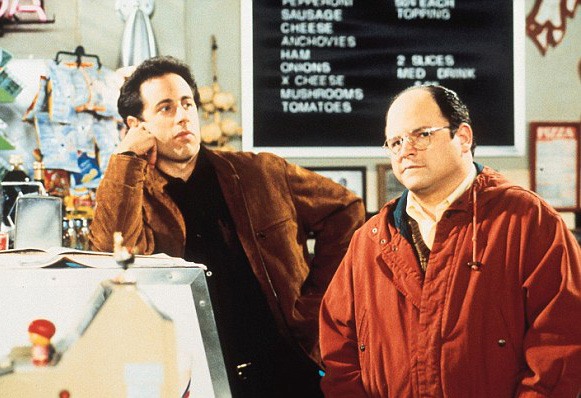
15. 285
16. 16
17. 180
18. 3
Some of the choicest trivia snacks come from small, significant numbers. Only Seinfeld trivia buffs tend to notice these, but once counted, they add to the large plateful of fan favorites. Portrayed by Michael Richards, Kramer slides in for the first time during Episode3, titled “The Robbery”. By the time the series concluded he had completed a total of 285 sliding entrances. Another entire series total is the 16 times Jerry said “Hello, Newman.” During the 180 episodes which comprised the entire series, Jerry was the only cast member to appear in them all. Jerry Alexander followed in a close second place by only missing “The Pen”. Fans note that Jason Alexander did not win an Emmy, but the other 3 main characters did.
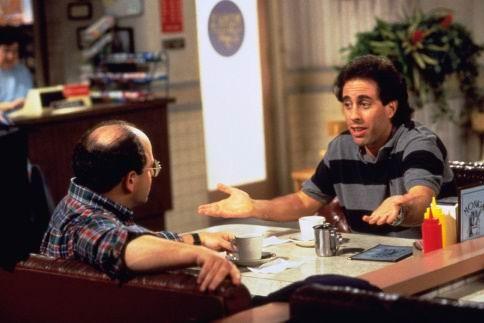
19. “BIF725”
This license plate number made its appearance in “The Parking Garage”. During this episode, George is seen leaning up against the car that has that license plate number. George is often called “Biff” by Seinfeld, who compares George to the character Biff Loman from the Arthur Miller play, Death of a Salesman. The third season of the show is when this running gag most often occurs. It is one of many running jokes that were interwoven throughout the course of the series. Many of them have literary references, but there is also a fan legend that there is some kind of reference to Superman in every episode. Jerry’s fondness for superheroes, particularly Superman, is also legendary, and references to the mighty man of steel are found in approximately 75% of episodes.
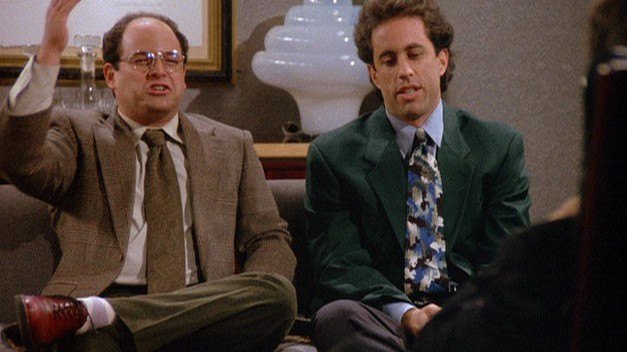
20. 12
Jerry has apartment décor and space that many would feel absolutely comfortable in, even with his slightly tired teal sofa. He lives with average looking furniture; tidy most of the time. What has consumed Seinfeld trivia fans, however, is observing the specifics of his environment. Seinfeldians count things obsessively. One thing that astute fans noticed was the array of breakfast cereal boxes that were neatly lined in cabinet spaces above his kitchen sink. This, believe it or not, is a prime source of controversy. In some shots in the final episodes of the show, it is possible to count exactly 12 different brands of cereal. Some fans have even gone so far as to identify the brands: Froot Loops, Honeycomb, Golden Multi-Grain Flakes, Frosted Shredded Wheat, Blueberry Morning, Grape-Nuts, Waffle Crisps, Bits’N’Pieces, Honey-Nut Shredded Wheat, a second box of Frosted Shredded Wheat, Shredded Wheat (Spoon Size), and Honey Bunches of Oats. One particularly avid fan also noticed that there were extra boxes in a cupboard above the cereal row, and thought there were more boxes there. Since the controversy surrounding exactly how many boxes there actually were remains unsolved, the number remains 12, in honor of the neatly placed dozen.
In 2012, Jerry Seinfeld began the show Comedians in Cars Getting Coffee, where he invites comedians to have a cup of coffee and ride in a classic car. Together, they talk about all sorts of things. He is the director and host of the show, which is distributed by Crackle, the digital network. It has aired for six seasons, with numerous guests. One episode was very telling about Jerry and his fascination with numerology. He was interviewing guest Amy Schumer, who he invited to ride in a Ferrari and have coffee at a diner in New York City. During the interview, they discussed the anxiety that can come when talking with people for the first time. He revealed that his favorite way of talking with people was to ask questions about numbers. He said he enjoyed number questions because there was always an easy number answer. He said that he regularly asks people to tell him the time they begin work, the number of years they have worked at their job, or the number of years they have lived in a particular place. While many in business would look at Seinfeld’s financial success and comment “it’s all in the numbers”, it is very certain that Seinfeld himself is thinking more about numbers than most.

